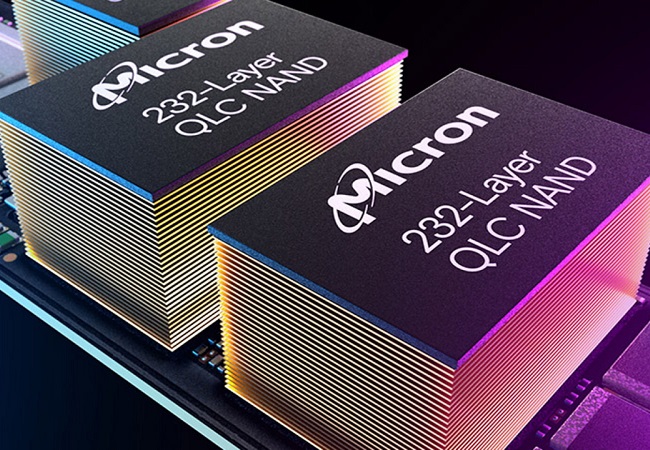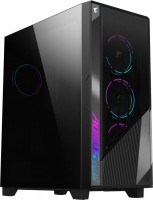Gigabyte AORUS NVMe Gen4 SSD GP-ASM2NE6200TTTD 2 TB
 | Expecting restock 5 601 ₴ One of the first consumer SSDs with a PCI-E 4.0 x4 interface, which at the time of its release became a symbol of technological breakthrough and was aimed at enthusiasts building systems based on top AMD chipsets. Despite the emergence of newer solutions, this drive remains relevant even several years after its release. Especially for users who value stable performance, high reliability, and efficient cooling. The model is built on the Phison PS5016-E16 controller, which was a pioneer among chips supporting PCI-E 4.0. In tandem with QLC memory 3D NAND, the drive delivers up to 5000 MB/s read and 4400 MB/s write speeds — results that in practice ensure fast game launches, short loading times, and smooth operation with large game files or projects. Declared IOPS reach 700,000 for writes and...750,000 for reads, providing high responsiveness when working with small files — be it game cache, level loading, or texture rendering. The cooling system deserves special attention: The Gigabyte AORUS NVMe Gen4 SSD is equipped with a massive copper heatsink that covers the entire SSD body and efficiently dissipates heat even during long sessions. Thanks to the high thermal conductivity of copper and the tight fit of the heatsink, the drive maintains stable temperatures without throttling, which is particularly relevant in compact builds or when used in gaming laptops with limited airflow. It should be noted, however, that the heatsink is quite thick and may pose a problem when installing in miniature ultrabook cases. An impressive rewrite resource of 3600 TB puts the drive on par with professional models designed for intensive long-term use. |
Gigabyte GP-ASM2NE6200TTTD | |||||||||||||||||||||||||||||||||||||||||||||||
| |||||||||||||||||||||||||||||||||||||||||||||||
One of the first consumer SSDs with a PCI-E 4.0 x4 interface, which at the time of its release became a symbol of technological breakthrough and was aimed at enthusiasts building systems based on top AMD chipsets. Despite the emergence of newer solutions, this drive remains relevant even several years after its release. Especially for users who value stable performance, high reliability, and efficient cooling.
The model is built on the Phison PS5016-E16 controller, which was a pioneer among chips supporting PCI-E 4.0. In tandem with QLC memory 3D NAND, the drive delivers up to 5000 MB/s read and 4400 MB/s write speeds — results that in practice ensure fast game launches, short loading times, and smooth operation with large game files or projects. Declared IOPS reach 700,000 for writes and 750,000 for reads, providing high responsiveness when working with small files — be it game cache, level loading, or texture rendering.
The cooling system deserves special attention: The Gigabyte AORUS NVMe Gen4 SSD is equipped with a massive copper heatsink that covers the entire SSD body and efficiently dissipates heat even during long sessions. Thanks to the high thermal conductivity of copper and the tight fit of the heatsink, the drive maintains stable temperatures without throttling, which is particularly relevant in compact builds or when used in gaming laptops with limited airflow. It should be noted, however, that the heatsink is quite thick and may pose a problem when installing in miniature ultrabook cases. An impressive rewrite resource of 3600 TB puts the drive on par with professional models designed for intensive long-term use.
Always clarify the specifications and configuration of the product with the online store manager before purchasing.
Catalog Gigabyte 2025 - new arrivals, bestsellers, and the most relevant models Gigabyte.


1 1 0 6 |
Speed Capacity Heavy A bit pricey (I hesitated because of the expense) |
With such speeds, it can replace RAM. High Speed Large Volume Compactness Design You can get burned. It's not that the price was biting, but I saved up for 15 months. use Gigabyte GP-ASM2NE6200TTTD less than month |
This piece of hardware gets very hot by default. And the radiator itself doesn’t really help here. Initially I installed it in a housing with two 140 for injection. I tried to install it in both the upper and lower slots, and under the vidyukha and above the vidyukha, but everywhere it heats up to 60 degrees, even if you don’t really do anything. It seems like its stated maximum is 70 degrees, but even 60 didn’t suit me, because... I want this piece of hardware to last longer and without throttling. As a result, another 2,140 fans were installed in the case, and specifically for this SSD, a 92 mm fan was purchased for 600 rubles. Why 92 mm? I just measured the distance from the bottom of the vidyuhi to the bottom panel, and it turned out to be about 90 mm. Because My video card is large and sagging a little, so I eyeballed a 92mm fan, and as a result, it now performs double duty for me - it supports the video card and blows on the two lower M2 slots in the motherboard. After all these manipulations, the temperature of this aorus remains constantly at 34-36 degrees, which I think is very, very good. I didn’t particularly test it under loads with synthetics, because... There’s no time now, but I think the picture won’t change too much and there will still be the same operating temperatures, well, maybe a little higher. And at work, I sit, write gigabytes onto it and the temperature does not change at all. I think this is all the effect of the directional 92mm turntable. Volume 2TB and top speed at the moment. Reliability is also promised to be high, but only time will tell. You can install a proprietary tool and look at the percentage of the life cycle, the current temperature and configure something else (I haven’t delved into it much). It gets very hot without additional cooling. But I think this can be attributed to all glands made using similar technology. |






































In use for 2 days. So far, everything is satisfactory, works quickly. Shaders in UE4 are calculated fast.
(Motherboard Gigabyte Aorus Elite x570, in a ventilated Super Tower case.
2 fans for intake + 2 fans for exhaust.)